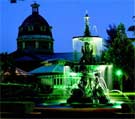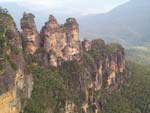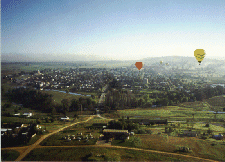Bathurst is on the banks of the Macquarie River and has been gazetted as a town since 1833. It boomed during the gold-rush days of the 1850s.
A major tourist attraction during the Easter and October weekends is the Mt Panorama racing circuit where car and motor-cycle events are held.
The whole of the central grid section of the city of Bathurst has been classified by the National Trust for preservation as an essential part of the nation's historic and cultural heritage; this includes many houses and terraced cottages, several parks, the civic centre zone, the buildings of the Technical College Annexe, the courthouse, post office and many other buildings.







